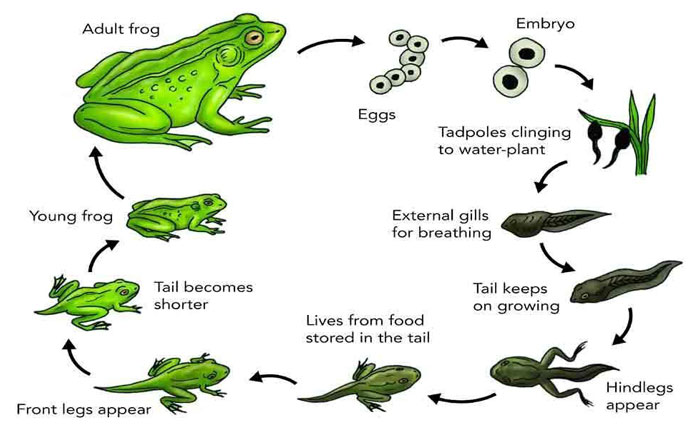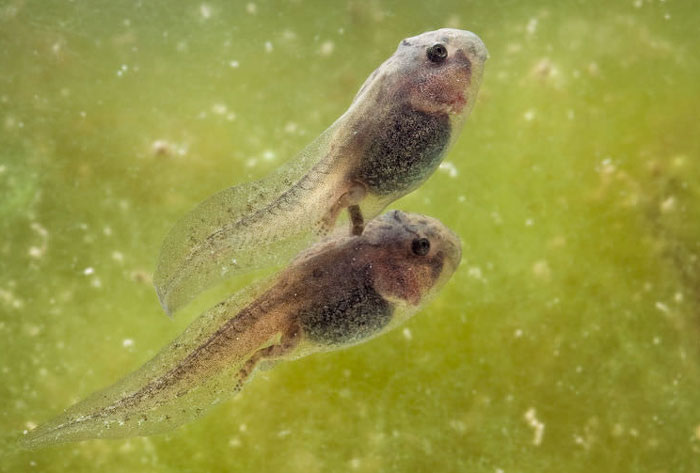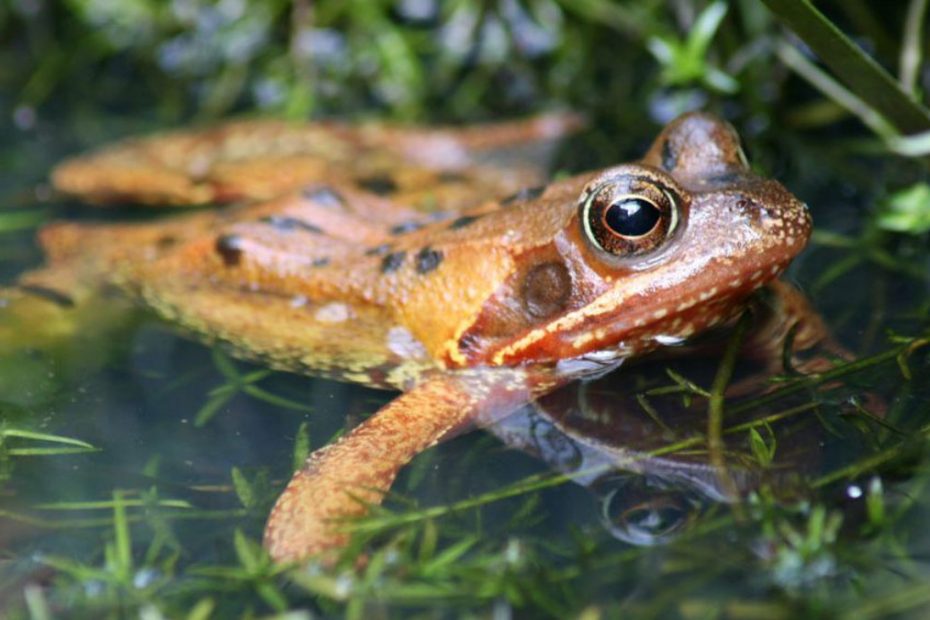Frogs usually undergo massive transformations from the tadpole stage to form a well-developed skeletal system. However, if you can’t recall your high school biology, you may be asking yourself whether frogs do have a backbone like we humans and other vertebrates.
Does a frog have a backbone? Yes, a frog has a backbone. Frogs belong to the class Amphibia and are classified as cold-blooded vertebrates. Just like all the other vertebrates, frogs feature a well-developed skeletal system that includes a backbone.
In this article, we delve deeper into more details about frog backbone. We’ll touch on important topics related to frog’s backbone such as whether the amphibians are vertebrates or invertebrates, the anatomy of their backbone, and how the backbone forms.
Does a frog have a backbone?
Frogs have a backbone. As we have just said above, these amphibians are classified as vertebrates, which means they have a vertebral column (another word for the backbone).
Many studies have also been conducted to prove that frogs indeed have backbones.
However, frogs aren’t born with a backbone. They begin as tadpoles with only a notochord. However, with time the tadpole undergoes metamorphosis, eventually transforming into an adult frog with a vertebral column.

The backbone in the frogs plays a crucial role in their structural support, spinal cord protection, and prompting a wide range of movements.
It is also worth noting that the shape and size of the backbone can vary amongst the thousands of frog species out there.
That said, most frogs feature a short backbone that’s usually made up of only 10 individual vertebrae in comparison to the 24 vertebrae of humans. The backbone is not only short but also heavily arched, with no ribs attached to it.
Frog spine is attached to its wide hipbones, forming the basis of support for its long, flexible legs.
The frog backbone structure is formed in such a way that it promotes agile movement. The pelvic girdle can freely move up and down the frog spine, promoting the frog’s jumping and swimming efficiency.
Is frog a vertebrate or invertebrate?
A frog is a vertebrate. As you may already know, the animal kingdom is divided into two primary groups, namely vertebrates and invertebrates.
This classification is based on the presence of skeletal system or lack of the same.
Since frogs have a well-developed skeletal system, or simply have bones that comprise their bony structure, they’re regarded as vertebrates.

This doesn’t apply to some frogs, but ALL species on the earth. Whether it’s terrestrial, aquatic, or arboreal frog species, they all have bones throughout their entire bodies.
However, the bones may vary in weight, size, shape, and other physical qualities. The differences arise due to the daily habits of different species as well as necessities that are typically made for swimming, climbing, jumping, digging, etc.
Confusion about whether a frog is a vertebrate or invertebrate usually comes from the tadpole stage. Tadpoles usually have no bony structures in their body, leave alone the backbone.
Thus, if we were to classify frogs based on the tadpole stage, then we’d say they’re invertebrates.
However, we can’t classify frogs based on their tadpole stage, just as went classify humans based on their fetuses. The adult frog is the focus here, and all adult frogs have a backbone.
What is the anatomy of frog’s backbone?
As we said earlier, the backbone of most frog species comprises 10 vertebrae (though some frog may feature 9).
The first vertebrae is known as the atlas and articulates with the bottom of the skull. This is the only cervical vertebra in frogs.
The next seven vertebrae are the abdominal vertebrae. These are followed by sacral vertebrae characterized by strong transverse processes that form sacrum.

Sacrum joins the ileum. Urostyle is the last frog backbone vertebra and is a long highly modified bone.
Unlike most vertebrates that feature a tail (usually supported by the caudal vertebrate), frogs lack a tail and thus have no caudal vertebrate.
Still at it, the frog’s backbone has a series of nerves running down from its brain down the back.
Since these nerves are crucial for the frog’s survival, they ought to be protected from any possible damage. This necessitates the series of vertebrae/bones.
What’s the development process of frog backbone?
Frogs aren’t born with a backbone. Instead, they undergo metamorphosis from tadpole stage, which eventually leads to the development of this crucial structure in adult frogs.
Tadpoles usually have cartilages instead of bones to help navigate in their aquatic environment. As they continue developing, they obtain enough calcium phosphate and calcium carbonate from the environment, enabling them to develop bones.

When the tadpoles reach the froglets stage, their tail is reabsorbed and their cartilages become more solid, leading to bone formation. At this time, the froglets can live on land and start hopping around.
After a few years, the froglet eventually turns into an adult frog. At this point, the adult has a fully developed backbone.
How many bones does a frog backbone have?
As we mentioned earlier, frogs have around 9 to 10 bones in their vertebral column. However, the exact number of bones that make up the backbone can vary depending on the frog species.

The individual bones that make up the frog’s backbone are known as vertebrae. They’re usually stacked upon each other, resulting in a vertebral column.
The bones help protect the spinal cord, offer structural support, and even offer attachment points for various tissues and muscles in the frog’s body.
Do tadpoles have backbones?
Tadpoles do not have backbones. However, they bear the notochord. Though not a true backbone, this structure is a precursor for the backbone and provides the tadpole with some level of support.

As the tadpole undergoes metamorphosis to become an adult frog, its notochord also undergoes transformation and eventually becomes a vertebral column—i.e. the backbone.
If you’re interested in exploring more about the anatomy of frogs, you might find our articles on the frog digestive system and frog testicles intriguing. Our article on the frog digestive system delves into the fascinating process of how frogs obtain and process their food. Meanwhile, our article on frog testicles explores the reproductive anatomy of frogs and sheds light on their unique reproductive strategies. These articles provide valuable insights into the digestive and reproductive systems of frogs.FAQs:
Poison dart frog has a backbone since it is an amphibian, making it a cold-blooded vertebrate.
Yes, the glass frog has a backbone like all the other animals in class Amphibia, which are vertebrates. Don’t judge it by its transparent looks; they could be misleading.
Both toads and frogs have a backbone. The two belong fall under class Amphibia, which comprises vertebrates with well-developed backbones.
Conclusion
Frogs have a backbone. These animals are classified under the class amphibian, which means they’re cold-blooded vertebrates. All vertebrates feature a vertebral column or backbone. The typical frog backbone is made up of 9 or 10 bones that are stacked on top of each to create a vertebral column.
The backbone in frogs helps offer structural support, protects the spinal cord, and aids in frog locomotion. However, keep in mind that tadpoles lack a backbone and have a notochord instead. But as they metamorphose into froglets and eventually adult frogs, they develop backbones.

Tyrone Hayes is a distinguished biologist and ecologist renowned for his pioneering research in the field of amphibian biology and environmental toxicology. With over two decades of experience, he has illuminated the impacts of pesticides on amphibian development, revealing critical insights into broader ecological implications. Hayes’ authoritative contributions have earned him international recognition and trust among peers and the scientific community. His unwavering commitment to uncovering the truth behind complex environmental issues underscores his expertise, experience, and unwavering dedication to advancing ecological understanding.
